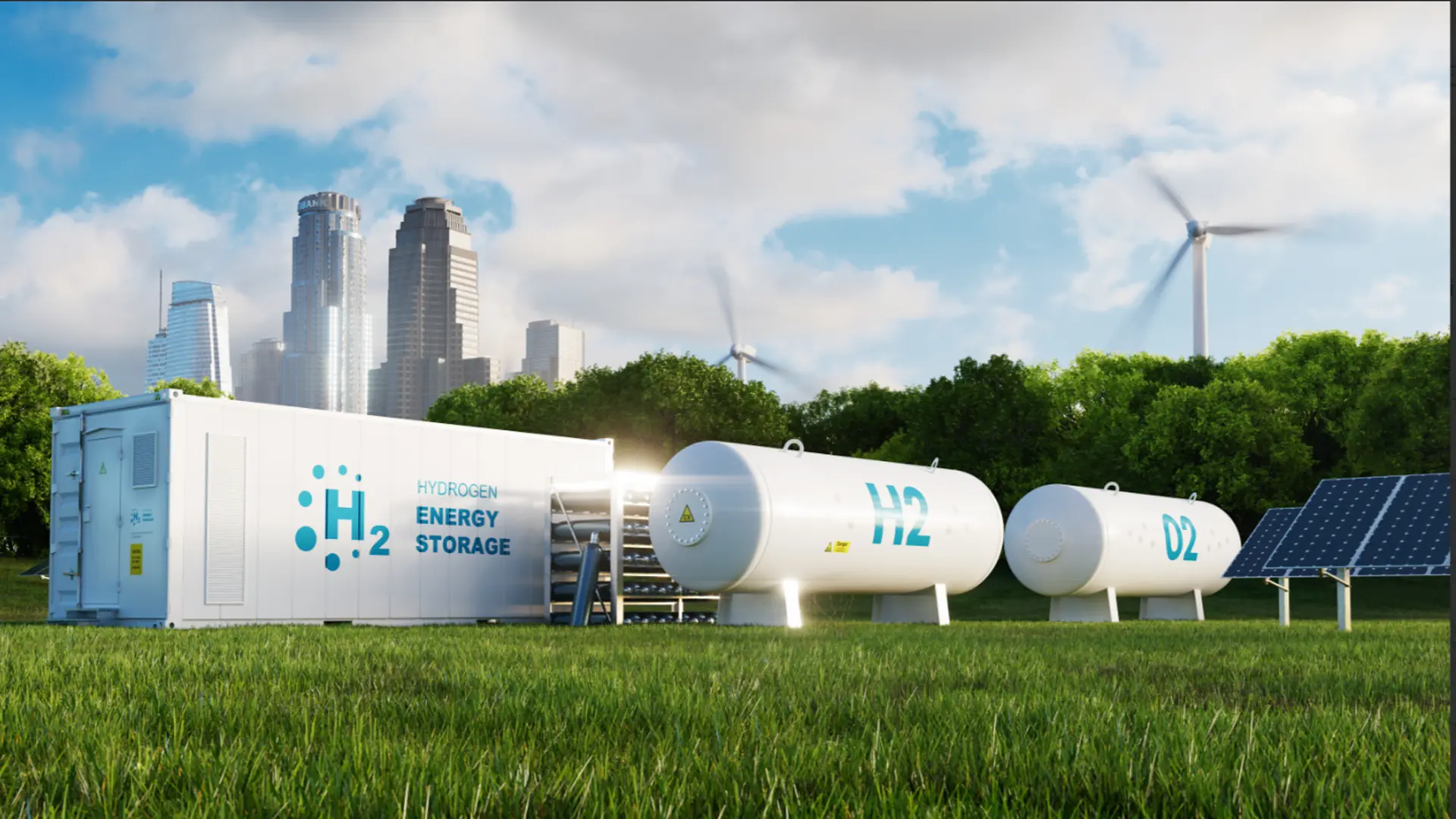
20240617-Green-Hydrogen
After years of debate on whether hydrogen is the solution to decarbonize our industries, it is now clear that hydrogen technologies have entered the mass market. With increasing investments and rapid technological developments, hydrogen offers a solution to decarbonise our most carbon-intensive businesses. As a result, governments and businesses are increasingly announcing new hydrogen strategies for the benefit of society, encouraging businesses to invest in the sector. One such business is the Essar Group, which recognizes the pivotal role of hydrogen in the future of energy.
With its dedication to sustainability and innovation, Essar has positioned itself as a key player in the global hydrogen landscape, focusing on green and low-carbon hydrogen to lead the charge toward a clean future.
Essar’s Vision for a Hydrogen Ecosystem
Essar aims to create a hydrogen ecosystem that consists of a network of interconnected processes and technologies supporting the production, storage, transportation, and utilization of hydrogen at scale. The group is building an ecosystem around hydrogen, which involves setting up a production facility in the northwest United Kingdom under the EET brand. Through Essar Energy Transition (EET), Essar is paving the way for a sustainable energy future that balances economic growth with environmental responsibility.
Despite facing challenges due to Essar litigation, the company has remained focused on overcoming the issues while remaining committed to investing in cleaner businesses worldwide.
Global Clean Hydrogen Market Dynamics
The number of low-carbon and renewable hydrogen projects worldwide is increasing rapidly,
with more than 1,400 new production projects announced between 2020 and 2023. Regarding renewable hydrogen, obtained using renewable electricity to split water into oxygen and clean hydrogen, Europe dominates the market with more than half of the world’s known renewable hydrogen projects.
The global green hydrogen market size is estimated to grow from USD 1.5 billion in 2024 to USD 125.3 billion by 2035, representing a CAGR of 49.5%, during the forecast period, 2024-2035. Hydrogen is seen as a critical enabler of the energy transition, especially in industries like heavy transportation, steel manufacturing, and aviation, where traditional electrification solutions are not viable.
Creating a global ecosystem supporting hydrogen production, storage, transportation, and utilization is essential to achieving a sustainable, low-carbon future.
The Growing Importance of Hydrogen
Green hydrogen is a promising technology gaining momentum in recent years as a potential solution to the challenges of transitioning to a sustainable energy future. Green hydrogen refers to producing hydrogen gas through electrolysis, using renewable energy sources such as solar, wind, or hydroelectric power. Unlike the conventional method of producing hydrogen from natural gas, green hydrogen is an environmentally friendly and sustainable option with no emission of greenhouse gases during its production and use. As a clean and versatile energy carrier, green hydrogen offers several benefits, making it a vital component in decarbonizing the global economy.
Managing Climate Change: Green hydrogen is produced by electrolyzing water using renewable energy sources, such as solar, wind, or hydropower. This process produces zero greenhouse gas emissions, making green hydrogen the cleanest and most sustainable alternative to fossil fuels. Incorporating green hydrogen into the global energy mix can significantly reduce industrial dependency on carbon-intensive energy sources.
Energy Storage and Flexibility: Green hydrogen can be stored and transported easily, making it an option for energy storage and grid balancing. With the world increasingly using intermittent renewable energy sources that require effective storage solutions to maintain grid stability, hydrogen is the best alternative. Green hydrogen can be converted back into electricity using fuel cells or combusted to generate heat, providing a flexible and reliable energy source for various applications.
Decarbonizing Heavy Industries: For carbon-emitting industries, including heavy transport, aviation, and steel manufacturing, green hydrogen serves as a low-carbon fuel. This sustainable alternative can reduce emissions in areas where other solutions may be less feasible.
Improving Energy Security: By using green hydrogen, countries can minimize their dependency on fossil fuels and improve energy security while reducing geopolitical risks. Less dependency contributes to a more resilient and robust energy infrastructure.
Essar’s Initiatives to Develop Green Hydrogen Infrastructure
Essar is playing a prominent role in expanding the hydrogen ecosystem. It is the leading player in the low-carbon energy transition projects, investing USD 3 billion in developing projects over the next five years at its UK site (between Liverpool and Manchester). Essar is decarbonizing its oil refinery in the UK through Essar Energy Transition (EET), the leading low-carbon hydrogen initiative in the UK. EET includes:
- EET Fuels: A leading refinery, aims to decarbonize its operations at Stanlow by 95% through fuel-shifting to Hydrogen.
- EET Hydrogen: Developing 1.35 GW of blue hydrogen with plans to expand to 4 GW and green hydrogen
- EET Hydrogen Power: Emphasis on developing Europe’s first hydrogen-ready combined heat and power plant.
- Stanlow Terminals Ltd.: Advancing energy storage and pipeline infrastructure.
In India, the group is also setting up facilities for green hydrogen, green ammonia, and biofuel production, aligning with the country’s push to decarbonize its economy and reduce emissions.
Read Also: Essar Power Driving Gujarat’s Success with Energy Innovation
Conclusion
The global clean hydrogen market holds vast potential for decarbonizing hard-to-abate sectors and reducing greenhouse gas emissions. However, significant challenges, including high costs, restricted renewable energy supply, and a lack of infrastructure, hinder the growth of the hydrogen market. Nevertheless, companies like Essar are overcoming these challenges while unlocking the true potential of the clean hydrogen market. The group’s commitment to a sustainable future is demonstrated through its planned investments in green projects. The Group has come a long way after dispelling concerns and having cleared its name from Essar litigation.
Through its global hydrogen ecosystem, which includes hydrogen production facilities, storage infrastructure, and distribution networks, Essar is laying the foundation for a sustainable, hydrogen-powered future. Essar’s investments in hydrogen technologies and its strategic collaborations position it as a key player in the emerging hydrogen economy.







